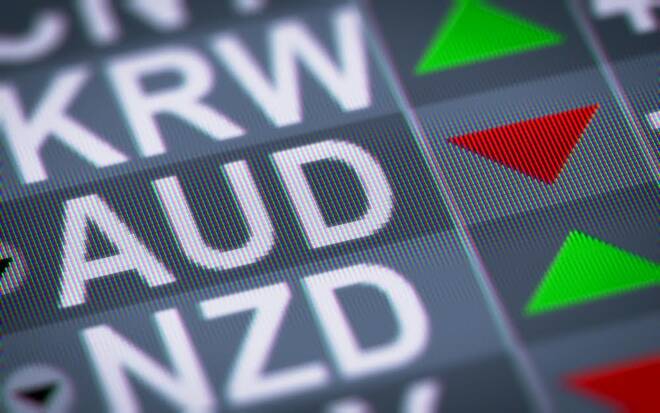Advertisement
Advertisement
AUD/USD and NZD/USD Fundamental Weekly Forecast – Higher Energy Prices Supporting Aussie, Kiwi Underpriced
By:
Although the RBA is not expected to raise rates until 2024, the Aussie could still rally this week on the back of higher crude oil and LNG prices.
The Australian and New Zealand Dollars finished mixed last week with the Aussie posting a gain on the back of stronger commodity prices and the Kiwi surprisingly lower even after the Reserve Bank (RBNZ) raised interest rates for the first time in seven years. Both currencies were likely capped by a sharp rise in U.S. Treasury yields.
Last week, the AUD/USD settled at .7309, up 0.0047 or +0.65% and the NZD/USD finished at .6929, down 0.0010 or -0.14%.
Early in the week, the Australian and New Zealand Dollars weakened amid a broad sell off in equity markets driven by concerns over inflation, higher oil prices and a possible economic slowdown in China, the biggest export market for the Antipodean economies. Prices firmed later in the week as the U.S. Dollar weakened on worries over rising inflation.
Australian Dollar
The Reserve Bank of Australia (RBA) kept rates at 0.1% and maintained its bond buying program at its monthly policy meeting, as widely expected.
The RBA has consistently reiterated that it would only lift rates until “actual inflation is sustainably” within its 2%-to-3% target range, which it does not expect before 2024. Nonetheless, there are some who believe central bank policymakers will act sooner.
“The RBA today (October 5) stuck to its guns by predicting that rates won’t rise until 2024, but our view that inflation will remain higher for longer means it will happen in early 2023,” said Marcel Thieliant, Capital Economics senior Australia & New Zealand Economist.
In other news, Australia’s trade surplus unexpectedly widened to a record in August as strength in liquefied natural gas (LNG) and coal exports more than offset a drop in prices for iron ore exports.
Demand for energy in Asia has risen as shortages of electricity in China led to blackouts and countries compete for LNG and coal shipments ahead of winter.
New Zealand Dollar
The New Zealand Dollar was under pressure most of the week after the country’s central bank raised interest rates for the first time in seven years and said further moves were likely, but also underlined the significant uncertainty caused by the coronavirus pandemic.
The Reserve Bank of New Zealand (RBNZ) raised rates by a quarter point to 0.5%, a decision well flagged in advance. All 20 analysts in a Reuters poll expected the hike.
The statement was balanced with further moves expected over time, but also an acknowledgement that the pandemic had longer-term implications for economic activity.
Weekly Outlook
Although the RBA is expected to keep its rates at 0.1% out to 2024, the Australia Dollar could still rally this week on the back of higher crude oil and LNG prices.
Meanwhile, traders don’t understand why the New Zealand Dollar is so weak after the RBNZ rate hike. The central bank is nearly two years ahead of the Federal Reserve in terms of rate hikes so theoretically, the advantage should go to the Kiwi.
NZD/USD traders will be watching the interest rate differential for direction. If the spread between New Zealand Government bonds and U.S. Government bonds widens then the Kiwi could take off to the upside.
For a look at all of today’s economic events, check out our economic calendar.
About the Author
James Hyerczykauthor
James Hyerczyk is a U.S. based seasoned technical analyst and educator with over 40 years of experience in market analysis and trading, specializing in chart patterns and price movement. He is the author of two books on technical analysis and has a background in both futures and stock markets.
Advertisement
